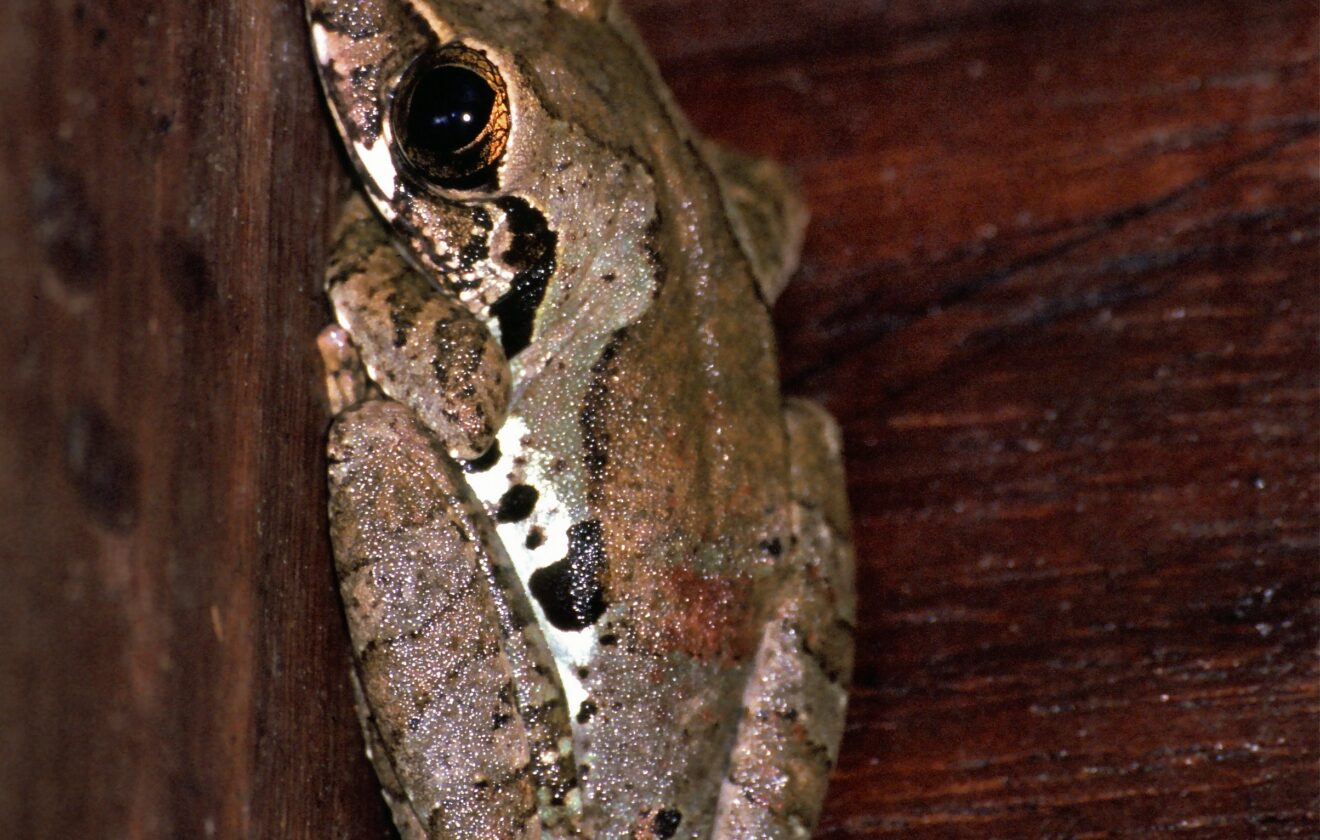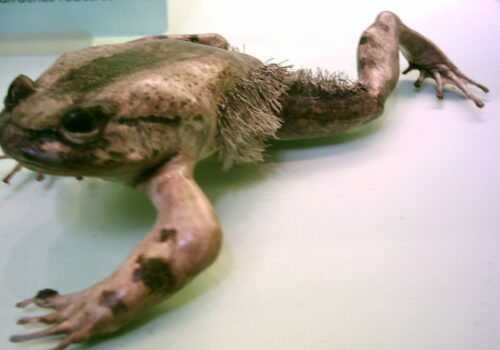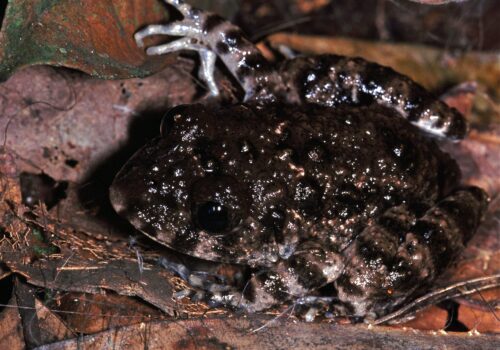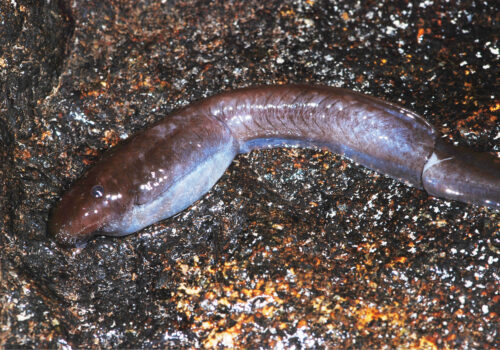- Introduction: A Symphony in the Rainforest
- Taxonomy and Classification: Placing Leptopelis calcaratus in Context
- Natural Habitat: Amid the Green Canopy
- Physical Characteristics: Nature's Artistry in Miniature
- Behavior and Life Cycle: A Dance Beneath the Moonlight
- Ecological Role: Guardians of Balance
- Threats and Conservation Status: Advocating for Amphibian Futures
- Cultural and Scientific Significance: Beyond the Frog's Croak
- Conclusion: Voices Worth Protecting
Introduction: A Symphony in the Rainforest#
Deep within the dense, humid embrace of Africa’s tropical forests, a chorus rises each night. Amid the whispering leaves and gentle pattering of raindrops emerges a distinct, melodious call—a sound both intriguing and oddly comforting. This nocturnal melody belongs to Leptopelis calcaratus, commonly known as the Efulen forest tree frog or the savannah forest tree frog. Despite its diminutive stature, this frog weaves deeply into the ecological tapestry of Central and Western Africa’s forests, playing roles both crucial and captivating.
Belonging to the family Arthroleptidae, this widely distributed yet surprisingly understudied amphibian offers fascinating insights into rainforest ecology and conservation biology. From its secretive, arboreal lifestyle to the intricate dynamics of its reproductive cycle, the life of Leptopelis calcaratus encapsulates the wonder and vulnerability of amphibian existence in an ever-changing wilderness.
Taxonomy and Classification: Placing Leptopelis calcaratus in Context#
Taxonomy provides the ecological identity card of any species, placing creatures systematically into the immense diversity of life. Leptopelis calcaratus sits comfortably within the vast amphibian group known as Arthroleptidae, a family mostly comprising ground-dwelling frogs and forest-dwelling tree frogs. Within this extensive family, the genus Leptopelis is renowned for arboreality—frogs adapted exceptionally well for life amid bushes and trees.
Close relatives, including Leptopelis aubryi and Leptopelis boulengeri, share similar forest habitats, but subtle differences in coloration, calls, and behavior set L. calcaratus apart. Named scientifically by Boulenger in 1906, its reference “calcaratus”—meaning ‘spurred’ in Latin—highlights a distinctive spur-like dew-pad structure often found on its hind feet, a fascinating anatomical adaptation we will soon explore further.
Natural Habitat: Amid the Green Canopy#
Thriving within West and Central African rainforests, Leptopelis calcaratus inhabits a vast geographical range extending from Nigeria through Cameroon, Equatorial Guinea, Gabon, the Republic of Congo, to parts of the Democratic Republic of Congo. In these verdant, shadowy forests, humidity hangs heavy in the air, offering just the right environment these frogs need to prosper.
Typically arboreal, this species favors the dense understory and mid-canopy layers of rainforests, occasionally venturing onto the forest floor, particularly during breeding periods. Leafy branches, vines, moss-covered trunks, and epiphyte-filled surroundings provide sanctuary, camouflage, and ample hunting opportunities. The presence of nearby freshwaters—streams, ponds, and swamps—remains critical, especially throughout its breeding season when eggs are laid amid vegetation adjacent to these aquatic nurseries.
Physical Characteristics: Nature’s Artistry in Miniature#
Observing a specimen of Leptopelis calcaratus, one is quickly enchanted by its intricate beauty. Adults usually range in size from 35 mm to 55 mm (approximately 1.4 to 2.2 inches) long, with males typically smaller and slighter in build compared to females. Its slender body, long limbs, and enlarged toe pads give it remarkable climbing agility required in its arboreal lifestyle.
The species displays an array of colors, primarily greens or olive browns, adorned by faint lighter blotches or occasional darker spots running down their backs. This coloration provides exceptional camouflage among the leaf litter of branches or trunks. Skin texture, smooth and slightly wet in appearance, facilitates cutaneous respiration—a key adaptation amphibians widely utilize.
Perhaps its most intriguing adaptation is the “spur” from which the species draws its specific name “calcaratus”. The hardened, pointed protuberances on the hind feet can aid in both gripping slippery tree bark and potentially deterring predators—a multipurpose evolutionary marvel, testament to nature’s thoughtful design.
Behavior and Life Cycle: A Dance Beneath the Moonlight#
Nocturnal Ambush Hunters#
Nightfall reveals the true nature of Leptopelis calcaratus as an adept ambush predator. Insects, spiders, and other small invertebrates flit through branches, unknowingly venturing close to the watchful amphibian. Patient and motionless, this frog utilizes impeccable camouflage techniques, striking suddenly to capture prey with precision.
A Symphony for Courtship: Reproduction and Development#
Mating season is a vibrant chapter in the life of this graceful tree frog. After rains dampen the landscapes, males initiate melodious choruses from carefully selected elevated perches to attract receptive females. Their harmonies ripple through the rainforest, signaling reproductive readiness and establishing territorial dominance among rivals.
Upon successful mating, the female lays gelatinous egg masses strategically hidden on leaves and foliage overhanging water bodies. In rainy weather, hatching tadpoles wriggle from their protective cocoons, dropping into pooled water below to commence their aquatic life stage. Meticulously adapted for survival, their rapid growth and eventual metamorphosis into juvenile frogs symbolize life’s resilient cycle amid the demanding environments they inhabit.
Ecological Role: Guardians of Balance#
Despite its modest size, Leptopelis calcaratus fills crucial ecological roles within its habitat. As predators, these tree frogs assist significantly in controlling insect populations, thus maintaining a delicate ecological equilibrium. Simultaneously, they provide sustenance for larger predators, including birds, snakes, and larger amphibians, thus establishing their unique intermediate ecological niche.
Furthermore, amphibians like the Leptopelis calcaratus serve as vital environmental sentinels. Their sensitive skin, permeable and easily affected by changes in moisture, chemical pollutants, and climate shifts, positions them exquisitely as indicators of ecological health. Declines or modifications in their populations send urgent messages about the entire system’s integrity, alerting scientists and conservationists alike to broader issues needing attention.
Threats and Conservation Status: Advocating for Amphibian Futures#
Though currently listed as Least Concern according to the International Union for Conservation of Nature (IUCN), Leptopelis calcaratus isn’t unaffected by environmental pressures. Habitat destruction, primarily from logging and agriculture expansion, continuously reduces their available range. Climate shifts affecting rainfall patterns potentially disrupt their breeding cycles, jeopardizing long-term survival.
Fortunately, several protected areas within the species’ distribution—such as Cameroon’s Korup National Park and Gabon’s Ivindo National Park—offer safe havens to breeding populations. Still, active habitat conservation, monitoring programs, and sustainable land-use practices remain essential strategies to ensure sustained healthy populations.
Cultural and Scientific Significance: Beyond the Frog’s Croak#
Throughout history, frogs retain symbolic relevance across cultures, representing fertility, renewal, or rain-bringing—an almost universal symbolism reflecting their environmental significance. West and Central African communities often recognize amphibians as symbols of healthy ecosystems, integral to local folklore and ecological wisdom.
Scientifically, organisms such as Leptopelis calcaratus guide researchers towards essential insights regarding environmental change, disease ecology (including chytridiomycosis capacity), and biological adaptations. Each small frog thus represents both a marvelous evolutionary tale and a critical source of scientific knowledge.
Conclusion: Voices Worth Protecting#
In understanding the fascinating existence of Leptopelis calcaratus, we become attuned to the delicate symphonies playing out nightly beneath the forest canopies of Africa.
By supporting conservation efforts, maintaining attentive stewardship of our global environments, and continuing to educate ourselves about such small yet meaningful wildlife ambassadors, we cherish and safeguard the melodious choruses echoing from deep within our planet’s treasured rainforests—a timeless concert well worth protecting.














